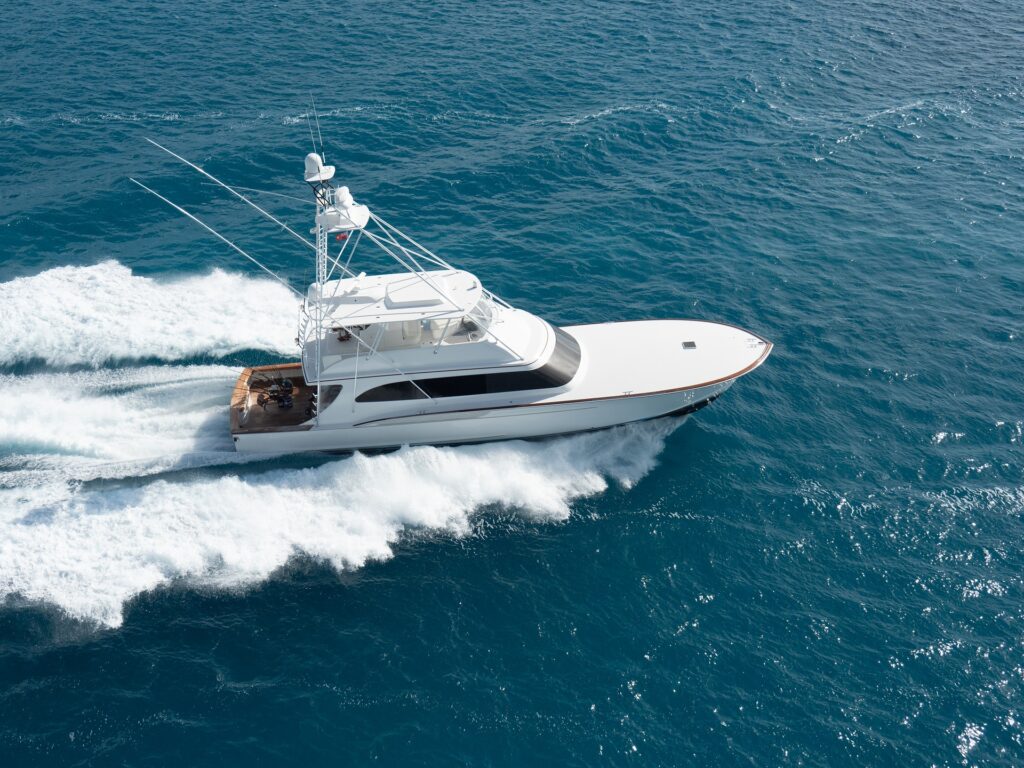Zoom in on Panoramic Thermal Detection
Article published on October 23rd, 2017
Super Yacht Technologies News
Infrared & Electro-optics experts from HGH Infrared Systems explain to us how the company’s focus on panoramic detection helps yacht owners fight piracy and paparazzi. We caught up with Cyril Marchebout, Sales Manager, and Communication Officer Coline David in an exclusive interview. The company’s 24/7 wide area surveillance system Spynel, with automatic intrusion detection and tracking over 360°, protects several critical infrastructures around the world.
What makes your cameras well-suited for owners looking protect their yacht from unwanted intrusion?
CM: Our series of real-time panoramic infrared cameras have the longest detection range in their category. They act as optical radars, but pick up targets that a radar cannot detect in any weather conditions, day & night. Our Spynel cameras can also successfully operate at high sea level thanks to an autonomous gyro-stabilized platform.
Our cameras provide images with a resolution of up to 120Mpix. The cooled Mid-Wave Infrared (MWIR) sensors Spynel-X and Spynel-S can also be equipped with a visible channel and a Laser Range Finder, both aligned with the infrared camera for simultaneous operation, detecting & identifying any intruders even quicker.
CD: They form a wide-area surveillance system, alerting owners to any potential targets, such as crawling men, small wooden boats, jet skis, RIBs, and UAVs.
What kind of camera fits what kind of superyacht owner?
CD: We find that choosing the correct model for clients is not only driven by the required detection range, but also the nature of the target they need to detect. For instance, detecting a jet ski at 10km will not require the same camera as for that needed for detecting a ship at 2km. It’s also important to bear in mind that for drone detection, a camera with a wider vertical field of view is required.
Everyone is different, so we try and make our cameras as customisable as possible. One add-on feature which proves popular with owners is a water sprinkler that cleans the salt water on the lens. Software plug-ins can also be added to import other sources of detection that the owner already has on board (such as radar alarms) into the camera’s Cyclope software.
CM: Cyclope is our advanced motion detection & tracking software, providing early target detection and identification over extremely large areas (human detection up to 8km), allowing yacht protection in port but also at sea.
Why is it important for thermal cameras to integrate with different softwares?
CM: There is no point having high-quality thermal imaging cameras if you are not able to analyse the data taken from these devices, or integrate this data with other information for enhanced awareness!
CD: That’s why the Cyclope software is in constant evolution. A favourite feature is the alarm editor function, enabling crew to analyse the trajectory of a boat to check if it is a real threat. The software achieves this by importing AIS data, meaning they can easily differentiate between a commercial boat and a pirate one.
And finally, what do you predict for the future of thermal imaging?
CM: Thermal cameras have already changed a lot with the arrival of IR detectors, which have a wider matrix (mega-pixels detectors) enabling a higher resolution. However, we can imagine that the cost of the cheaper IR uncooled cameras will probably fall in the coming years. This could lead to new the thermal imaging industry gaining a wider audience, which we personally would see as very exciting.
Thanks, Coline and Cyril. Look out for more tech insights from HGH in next month’s edition!

